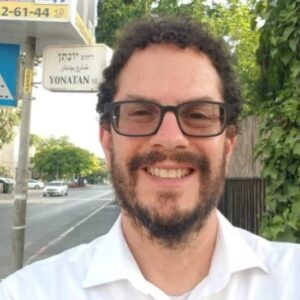The Shofar, Temple Beth El’s monthly publication, keeps community and temple members up to date on what’s going on. Take a look at this month’s Shofar to see what’s coming up or browse through the archives to see all that we’ve done!
| LETTER FROM |
| THE RABBI |
Adding Light, Not Lessening It
I once heard a story about a child whose grandfather would bring out his small brass Chanukiyah (Chanukah menorah) each year—tarnished in places, glowing in others. After lighting the candles, the grandfather would say, “The miracle of Chanukah isn’t only what happened then. It’s whether we choose to add light now.” These words echo those of our sages.
The Talmud records the debate between Shammai and Hillel: Should we start with eight candles and decrease, or begin
with one and add each night? We follow Hillel, who teaches,
![]()
“We elevate in matters of holiness and do not diminish” (Babylonian Talmud, Shabbat 21b).
A Midrash deepens this by teaching that God hid a primordial light—or ha-ganuz—within the world, to be revealed slowly through human goodness (Genesis Rabbah 3:6). Every mitzvah, every kindness, uncovers more of that original glow.
Hillel’s practice is more than ritual; it’s a spiritual stance. Life can tempt us toward Shammai’s decreasing flame, especially during difficult seasons. But Hillel insists that holiness grows through steady, hopeful effort. The story above embodies that hope—always lighting that first candle as if believing tomorrow could hold more brightness than today.
So this Chanukah, whether with family, friends, or even joining us at Shabbat Chanukah (Friday night, December 19th at 6pm!), choose one small, concrete act that adds light to someone’s life—a call, a donation, a gesture of kindness. Let it be your “added candle.”
Chag Urim Sameiach: Happy Festival of Lights!
Rabbi Jonathan Klein
p.s. send me feedback via phone: 424.248.5775. Thank you!

SHOFAR ARCHIVES
| 2025 | 2024 | |
| January | January | |
| February | February | |
| March | March | |
| April | April | |
| May | May | |
| June | June | |
| July | July | |
| August | August | |
| September | September | |
| October | October | |
| November | November | |
| December |
